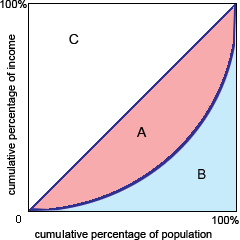A Gini coefficient for this demonstrated figure can be computed as: (w) area A minus area B. (x) area A × area B. (y) area C minus [area A + area B]. (z) [area A] / [area A + area B].

I need a good answer on the topic of Economics problems. Please give me your suggestion for the same by using above options.